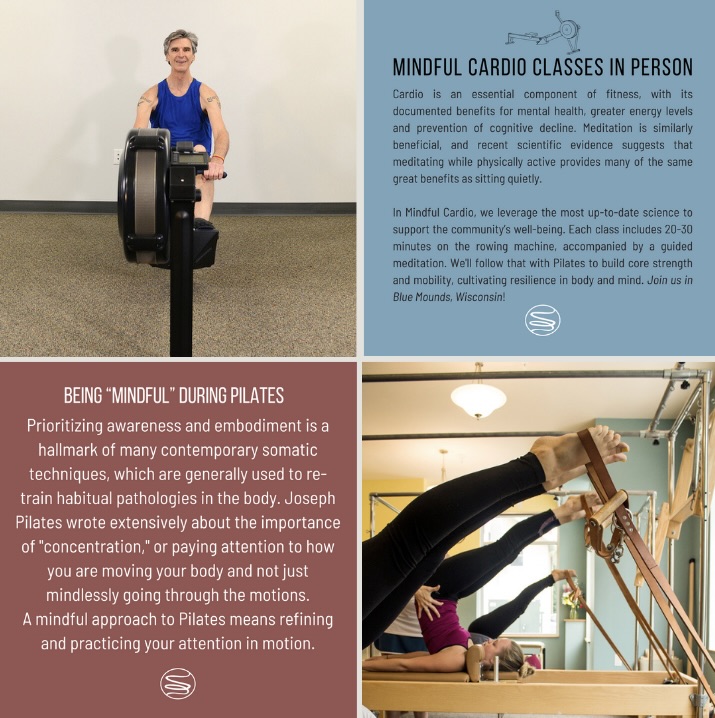Body & Emotion
 One of the joys of teaching is the exchange of knowledge. While my work relates to the ostensible outflow of yoga knowledge, it's the rare yoga session where I don't come away with something, too. Perhaps I refine my teaching methods by noting a pattern in someone's body/mind, sometimes I'll learn what not to do from hard experience, and sometimes I get to see yoga through the lens of another subject area.
One of the joys of teaching is the exchange of knowledge. While my work relates to the ostensible outflow of yoga knowledge, it's the rare yoga session where I don't come away with something, too. Perhaps I refine my teaching methods by noting a pattern in someone's body/mind, sometimes I'll learn what not to do from hard experience, and sometimes I get to see yoga through the lens of another subject area.I've been fortunate to work with many experts. Working with acupuncturists invariably demonstrates the relationship between yogasana (postures) and the nadis (or meridians, as the Chinese call them). Teaching surgeons often yields insights into the internal workings of the body. While working with a veterinarian a few years back, we observed that the musculature of the human pelvic floor is remarkably similar to the pelvic floor musculature of dogs and cats.
For humans, the pelvic floor muscles juggle the responsibilities of supporting upright posture, supporting the organs, and regulating reproduction and elimination. For the four-legged animals, the pelvic floor muscles are primarily associated with elimination, reproduction and communication. The functions of postural and organ support are a moot point when the spine exists in the horizontal plane (as in the case of four-legged animals).
While our furry friends don't use words to describe their mental state, they do use their tails to communicate. We can ascertain the mindstate of a dog by observing its tail. A tail lifted high suggests an enthusiasm and zest for life (it's time to play!) The tail tucked between the legs communicates fear and submissiveness. If you've lived with quadrupeds for long, you're likely familiar with the nuances communicate by the tail such as annoyance, apprehension, fear, exuberance, etc. The muscles of the pelvic floor support the expressive tail, and are a vital aspect of the quadrupeds' communication of its inner state to the outside world.
Since the quadruped pelvic-floor musculature is so similar to the biped pelvic floor, I've long contemplated the relationship between our human pelvic floors and our minds. Subjectively, I think the parallels are compelling. When I see a person holding their tailbone tucked in a yoga pose, their eyes communicate distress. You can literally see the effort involved to "hold it all together." This is not a pleasant way to navigate the world, and most certainly is not continent with the aims and philosophy of yoga. While the tension involved with "tuck the tailbone" is readily visible, it remains a common yoga instruction. This is unfortunate, as a toned pelvic floor (leading to mula bandha) is very important for good posture, while a tailbone that's rigidly tucked suggests that the sky is soon to fall. Surely there's a middle way.
Just last week I was working with noted animal behaviorist, Patricia McConnell. Patricia (http://www.patriciamcconnell.com) is a joy to work with, as her infectious curiosity is a perfect fit with Alignment Yoga. During our last session, our conversation drifted into the realm of pedagogy.
Patricia related the dilemma when well-intentioned dog owners try to teach their furry friends the end-result. In their enthusiasm for the result, they often neglect the intermediate steps required to get from here to there. We both had a good laugh, as I find the very same thing in yoga teachers/students.
In education, it's important to know your starting point - where here is. Once you've defined your starting point, define where it is you'd like to go - where there is. Once you have identified here and there, identify the steps that lead sequentially from the starting point to the goal.
A toned pelvic floor is imperative for the health of the reproductive system, urinary tract, bowel, and good posture. Unfortunately, many people have disconnected their minds from their pelvic floor, and the musculature has defaulted into a state of chronically contracted weakness. Suggesting that students tuck their tailbone in a yoga pose teaches that good health and vitality is not their natural state. While tensing the pelvic floor may be a starting point to bring awareness to an unfamiliar region, to suggest moving through the day in this alignment suggests that we bipeds don't have a secure place in this gravitational field. In Alignment Yoga, we use progressive techniques to guide students back to a comfortable relationship with being in their body. Good health and vitality is our natural state, as a dog's natural state is the very definition of joie de vivre.
A healthy pelvic floor results from taking appropriate steps to get from here to there. Next week I'll be posting a video blog that describes a reliable technique to reconnect with the pelvic floor, and concrete steps to develop more functional strength and flexibility in this often misunderstood part of the body.
Namaste,
Scott Anderson
www.alignmentyoga.com



Comments